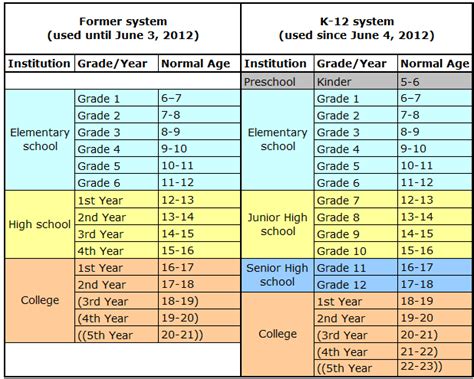Junior high school, also known as middle school, is an educational level that typically follows elementary school and precedes high school. The grades that are included in junior high vary from country to country, but in the United States, junior high typically includes grades 6-8.

What is the Purpose of Junior High?
The purpose of junior high school is to provide students with a transition from elementary school to high school. During junior high, students begin to take on more academic responsibility and are exposed to a wider range of subjects. Junior high also helps students to develop their social and emotional skills.
What are the Benefits of Junior High?
There are many benefits to attending junior high school. These benefits include:
- Academic preparation: Junior high provides students with the academic foundation they need to succeed in high school and beyond.
- Social development: Junior high helps students to develop their social skills and learn how to interact with others in a positive way.
- Emotional development: Junior high helps students to develop their emotional skills and learn how to cope with the challenges of adolescence.
What are the Challenges of Junior High?
There are also some challenges that come with attending junior high school. These challenges include:
- Increased academic workload: The coursework in junior high is more challenging than the coursework in elementary school. This can be a difficult adjustment for some students.
- Social pressure: Junior high can be a time of intense social pressure. Students may feel pressure to conform to certain standards and to fit in with their peers.
- Emotional ups and downs: Adolescence is a time of great emotional change. Students in junior high may experience a wide range of emotions, including happiness, sadness, anger, and frustration.
How to Help Your Child Succeed in Junior High
There are a number of things you can do to help your child succeed in junior high school. These include:
- Be supportive: Let your child know that you are there for them and that you believe in them.
- Set high expectations: Encourage your child to challenge themselves and to do their best.
- Provide a positive learning environment: Create a home environment that is conducive to learning. This means providing your child with a quiet place to study, access to books and other learning materials, and support for their educational goals.
- Stay involved: Attend your child’s school events and meet with their teachers on a regular basis. This will help you to stay informed about your child’s progress and to provide them with the support they need.
Tables
| Grade | Age Range | Typical Subjects |
|---|---|---|
| 6 | 11-12 | Language arts, math, science, social studies, art, music, physical education |
| 7 | 12-13 | Language arts, math, science, social studies, art, music, physical education, foreign language |
| 8 | 13-14 | Language arts, math, science, social studies, art, music, physical education, foreign language, electives |
| Benefit | Description |
|---|---|
| Academic preparation | Junior high provides students with the academic foundation they need to succeed in high school and beyond. |
| Social development | Junior high helps students to develop their social skills and learn how to interact with others in a positive way. |
| Emotional development | Junior high helps students to develop their emotional skills and learn how to cope with the challenges of adolescence. |
| Challenge | Description |
|---|---|
| Increased academic workload | The coursework in junior high is more challenging than the coursework in elementary school. This can be a difficult adjustment for some students. |
| Social pressure | Junior high can be a time of intense social pressure. Students may feel pressure to conform to certain standards and to fit in with their peers. |
| Emotional ups and downs | Adolescence is a time of great emotional change. Students in junior high may experience a wide range of emotions, including happiness, sadness, anger, and frustration. |
| Strategy | Description |
|---|---|
| Be supportive | Let your child know that you are there for them and that you believe in them. |
| Set high expectations | Encourage your child to challenge themselves and to do their best. |
| Provide a positive learning environment | Create a home environment that is conducive to learning. This means providing your child with a quiet place to study, access to books and other learning materials, and support for their educational goals. |
| Stay involved | Attend your child’s school events and meet with their teachers on a regular basis. This will help you to stay informed about your child’s progress and to provide them with the support they need. |
